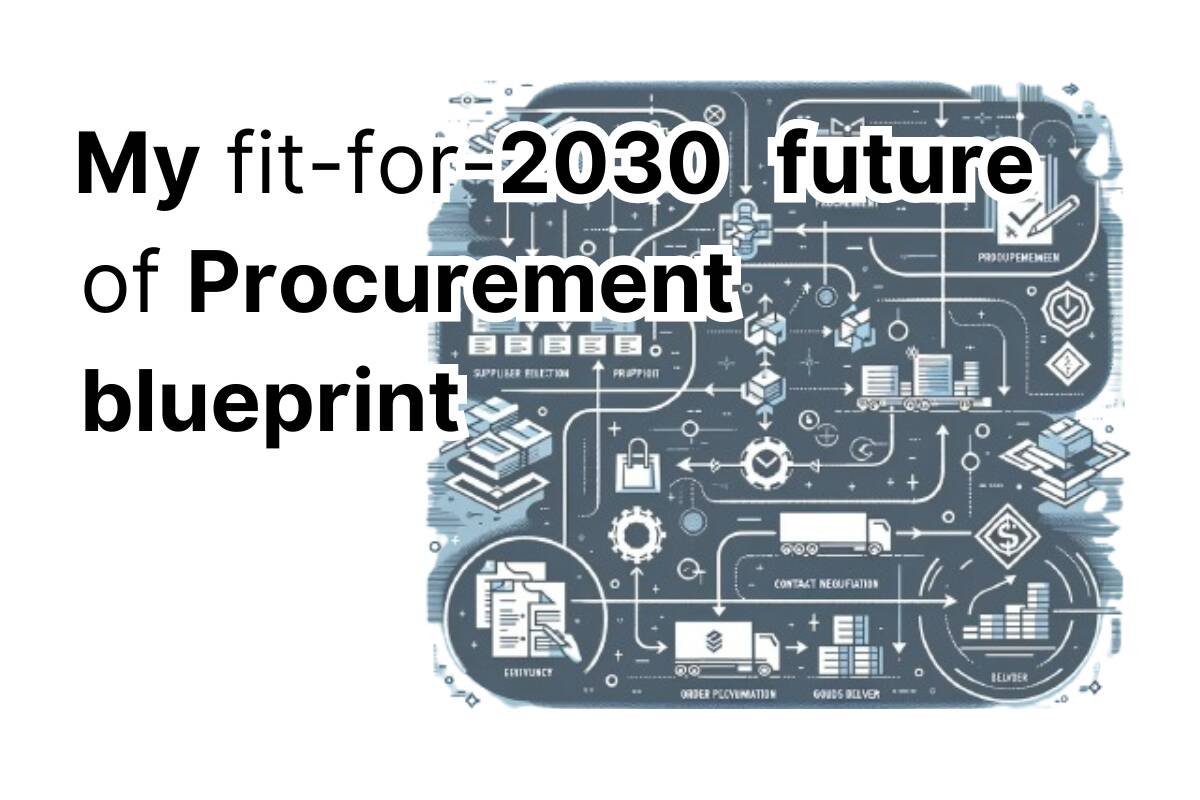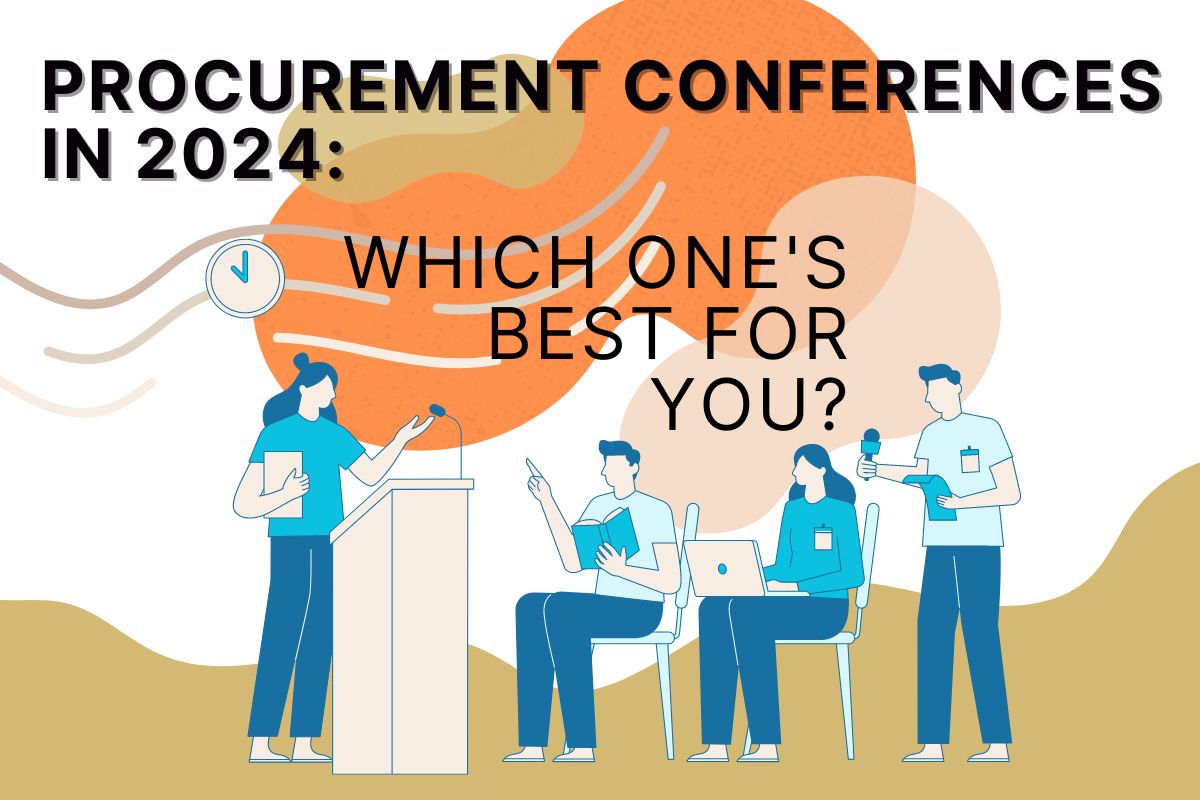Procurement is changing. And so must the contemporary procurement leader. We’re – slowly – moving from being a process obsessed, box-ticking function to being a more value-driven, progressive organisation.
One that listens to the business but is also confident enough to challenge them and push back when necessary.
As Procurement moves away from being an administrative function that reactively delivers cost savings, the personnel leading it needs a makeover too. We’re gradually evolving into being the fulcrum of an organisation’s supply chain who strategically manages and controls supplier relationships.
If we’re going to do that successfully, then we can’t have a bunch of boring technocrats with no creativity leading our profession.
9 Ways to become a more Progressive Procurement Leader
So, without any further ado, let’s take a bit of a tour of what qualities are to be sought after in the modern procurement leader. We’ve included 9 in total but these could be expanded on no doubt. I’d love to get your thoughts if you think we’ve missed any.
1. Encourage and reward entrepreneurial thinking
Pragmatism trumps rigid process.
Yes, we live in an era where risk management and resilience is the order of the day. But that doesn’t mean that we’re not able to take calculated risks. Getting things done is more important to a business than following every minute detail of a process. The business exists for its customers and shareholders, not the internal audit department.
We need fewer “yes men” and more folks who will disrupt and challenge the status quo.
In short, we need to start thinking like entrepreneurs. Procurement headcount is a finite resource. Use them wisely. As American marketing guru Perry Marshall once famously said:
The average $100,000 a year executive spends over half their time on menial, $10-an-hour tasks.
If you’re hiring “policeman” roles while firing front line Category Managers or Analysts, then please stop and think.
Who is going to implement all of this process and governance, if your supplier-facing teams and their support network are being decimated by layoffs and hiring freezes? Front line procurement team members are burnt out.
2. Communicate effectively
Nobody has the time to read your boring 20-page PDF procurement policy. The modern procurement leader must communicate like a marketer or your favourite YouTubers (or TikTokers if you’re a youngster!).
We tend to communicate more like lawyers. Not a good look.
One of the biggest reasons why Procurement finds it so difficult to garner the respect from our stakeholders is that we don’t speak their language.
Explain things in simple terms.
Make it easy for internal business partners to understand what they need to do.
We’re terrible at this. I don’t know why. We’re intelligent, articulate people but we just seem to love jargon.
It’s better to have a 1-page procurement policy, beautifully designed and easy to follow. Frame it in the canteen. Put it in the lifts. Have it on the homepage of your intranet or company SharePoint site.
OK, it might only cover 60-70% of what a stakeholder really needs to know. But that’s better than something that covers every minutiae, that nobody knows where it is or bothers to read it.
3. Confidently interact with stakeholders as an equal business partner
I hate the term “serving the business”. I know it’s controversial, but I really dislike it.
Maybe it’s because I’ve had to deal with a few semi-literate Operations Directors in my time who thought I was their personal admin assistant.
The point here is that a procurement leader can’t go around thinking of themselves as second-class corporate citizens. If we do, our stakeholders will walk all over us.
A previous Head of Procurement who I worked for stopped her organisation using the words “internal customer” on emails and in presentations. Instead, she made us replace it with “internal business partner”. A small difference, but a seismic shift in how the procurement team perceived itself.
We are a service function to the wider business, but we are not in servitude to them. Your “customer” is the company’s end consumer of the product, or its shareholders.
Procurement leaders especially need to hold their heads high when communicating and negotiating with the wider business. If they roll over and have their belly tickled by their peers at every opportunity, then Category Managers are going to have a rough time being seen as the drivers of sourcing and supplier strategies.
That is to the detriment of the business as a whole.
4. Promote a culture of delivering value
There’s a lot of talk about procurement’s role now being “beyond just savings”. This is true, but recognition and respect for this will only come if we embrace this as a mindset.
Doing this will possibly include a difficult conversation with the CFO, and then a charm offensive to build alliances in the wider business. The brutal truth is that nobody in the business outside of Finance and the boardroom really cares about cost savings.
Nobody except for Procurement drives to work thinking “today my goal is to drive costs down”.
Understanding the different ways that you can add value in your category is a good first step to building this mindset. Getting regular visibility of projects your stakeholders are working on will gradually move them away from just working with you on a transactional basis.
We all want to move away from “can you negotiate this contract? I’ve already told the supplier he’s getting the business,” don’t we?
5. Ensure alignment of procurement goals with the wider business
Building upon the previous point, we all-too-often think in silos.
It’s not always our fault.
We’re rarely involved in the budgeting and forecasting process. But we need to be.
If we don’t understand what the wider business’s challenges are, then how can we help them drive value, over and above just focusing on cost reduction?
A common mistake is thinking we’re aligned because everyone in head office is on the same page. Take a trip to a country office or a remote production plant though, and there is disarray.
Business alignment doesn’t stop at the entrance to HQ.
6. Eliminate box-ticking culture
Following process for the sake of process is the absolute worst example of why procurement managers often don’t have the respect of their stakeholders.
Ask your team how much of their day is typically spent on process, administration and firefighting.
You’ll probably be surprised to hear that it’s between a third and a half of the typical Category Manager’s job. That figure is almost certainly higher for a Plant Procurement Lead or similar role.
Is this a good use of their time? Could an admin assistant do this work? Can it be automated or eliminated by investing in technology?
7. Hire interim contractors as experts when you need them
The contingent workforce, or “gig economy” is where it’s at. It’s also cheaper too, over the long run.
You no longer need to hire people in high cost countries. You also don’t need to pay social security, health insurance or paid annual leave to independent contractors.
What’s more, the contingent workforce will typically have deeper subject matter expertise than your in-house procurement team. The nature of what they do means that they see more organisations and are exposed to more situations than a permanent employee. They’re a bit like consultants in that sense.
Their role is to go into organisations and hit the ground running.
Yes, their day rate or fee is higher than a full-time equivalent’s gross salary. But you can flex your headcount much easier when you’re lean, meaning the overall annual wage bill will almost certainly be less.
Marketing and IT have been doing this for years. The best software developers and marketing strategists are all freelancers.
Procurement is behind the curve, big time.
8. Talk to your worker bees
Town Hall meetings are an echo chamber. It’s management talking to the organisation, rather than talking with and amongst the organisation.
Get rid of them. They’re a waste of time. Half your staff are probably not engaged anyway. Shocking, but unfortunately true.
If you need to do a mass communication Town Hall style, then record a podcast or a videocast and push it out to your team. Let those who are interested watch it in their own time.
Instead, take the time you spend preparing slides for a Town Hall meeting and schedule five 1-to-1 meetings with team members you wouldn’t normally speak to. Not your favourites, or the ones who you bump into at the coffee machine in the office you’re based in.
Ideally, talk to those who you feel are not engaged or frustrated. You’ll be surprised how much they share with you if you reassure them that it’s not a witch hunt.
The leadership iceberg only sees a few, very visible problems. These intimate meetings will make you aware of the potential snowballs that could be gathering pace, that you’re completely oblivious to.
And now, it’s time for the last one.
Who remembers Gizmo from the film Gremlins? I’m showing my age here as an 80s kid. One of the rules was “never, no matter how loud he screams, never, ever, feed him after midnight”.
Of course, he did get fed after midnight, which created the metamorphosis process into the Gremlins.
Similar to this golden rule, I see point number 9 as being my most important golden rule for the modern procurement leader…
9. Give your team cutting edge tech and administrative support
You’re never going to attract a team of A players if you’re managing procurement in Excel and a legacy ERP system.
Nor will you retain them, if you’re expecting Category Managers to spend time booking flights and scanning receipts, to run around chasing contract signatures or fiddle around in an ERP system raising purchase orders and battling accounts payable issues.
A high performing procurement team should have intuitive, easy-to-use software that does the heavy lifting for them. Is there something that can’t be automated, eliminated or simplified by technology? Then, if it isn’t high level work, then delegate it to an admin assistant or a junior buyer.
How do I think as a business owner? Any time spent on work that’s below my effective hourly billable rate is an inefficient use of my time. As a modern, progressive procurement leader, you should think the same of your team members’ time.
If a packaging machine on a production line was only operating at 60-70% efficiency, there would be lean consultants and 6-Sigma projects dedicated to it.
So, why don’t we think the same about white collar productivity?
I’ll let you ponder that one in your own time.
If you’re curious to learn more about what’s the procurement software and to see what tasks can be automated or assisted by technology, then let’s have a chat.
You’ll probably be pleasantly surprised by what your budget could get you. Especially if you stay away from some of the legacy brands.


